Somaliland. Part III. SafariMap
March Many people have heard about African safaris, but have no idea what they’re actually like. A safari is a genuine adventure. It’s an opportunity to become one with nature, experience the animal kingdom, get closely acquainted with rare birds and beasts. Safaris are primarily made possible thanks to technological advances. A specially equipped vehicle allows you to get up close to predators that would be inapproachable or dangerous in other circumstances. A safari requires patience, attentiveness, curiosity. Then nature will reveal itself in all its beauty. Today’s safari takes us to the vicinity of two hills near Hargeisa, the capital of the unrecognized state of Somaliland. These hills have been perceptively and wittily named Naasa Hablood, which translates as “virgin’s breasts.” 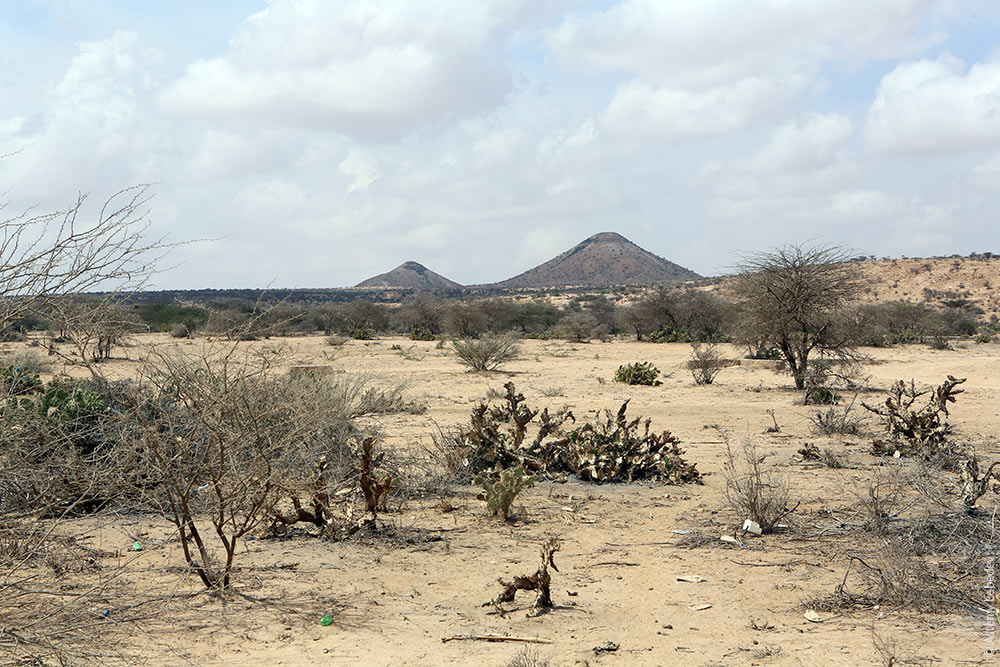 People rarely come here, the city is some distance away, so it’s a great place to dump household waste. 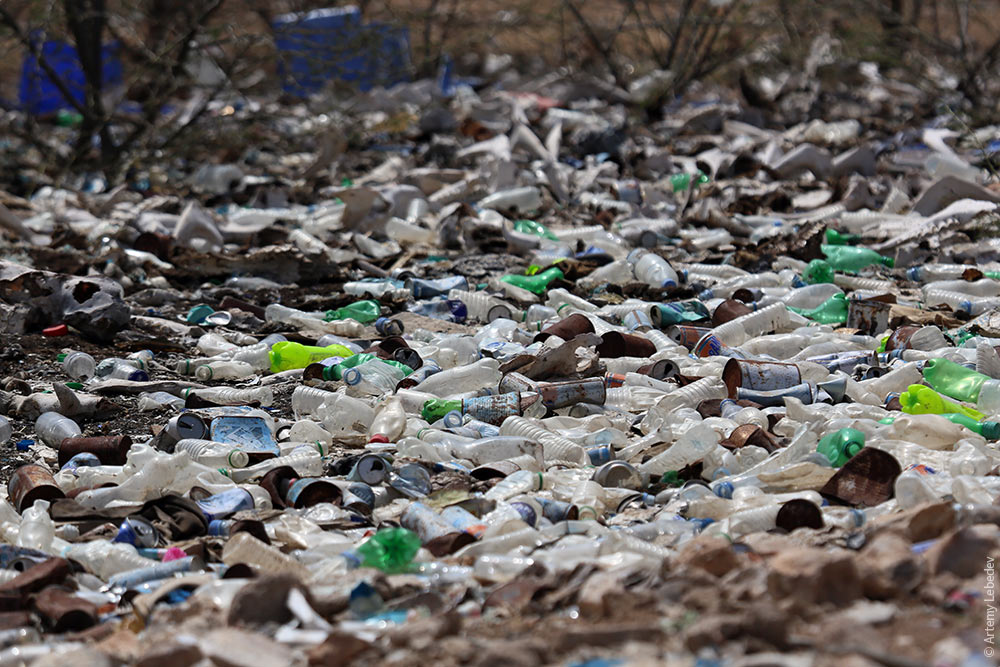 And food waste too, of course. This is precisely what attracts various wild animals here in the first place. 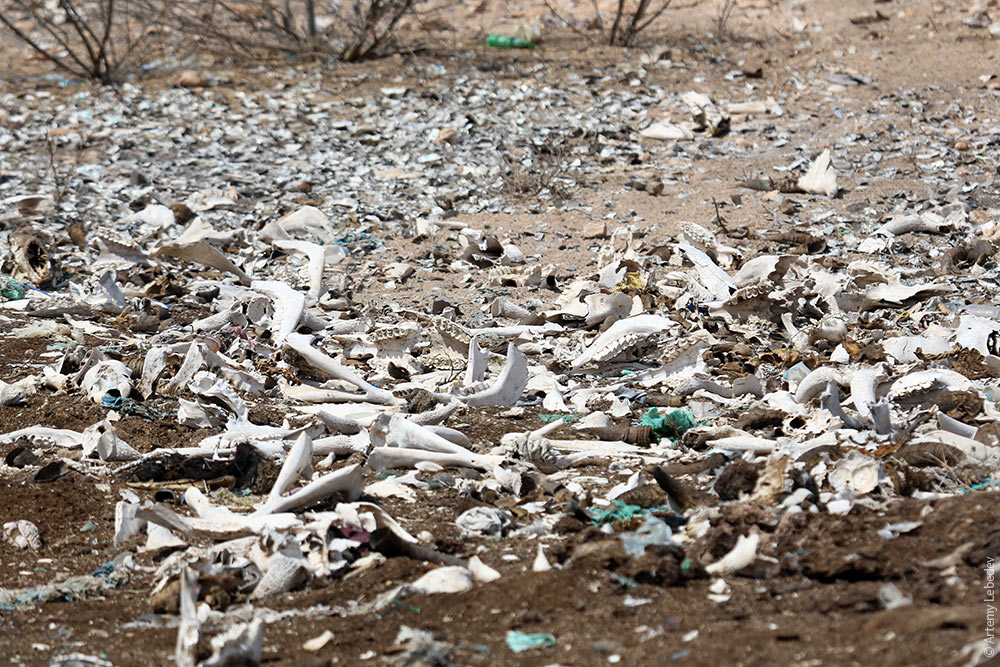 The handsome marabou with its fleshy pink neck is a classic scavenger. 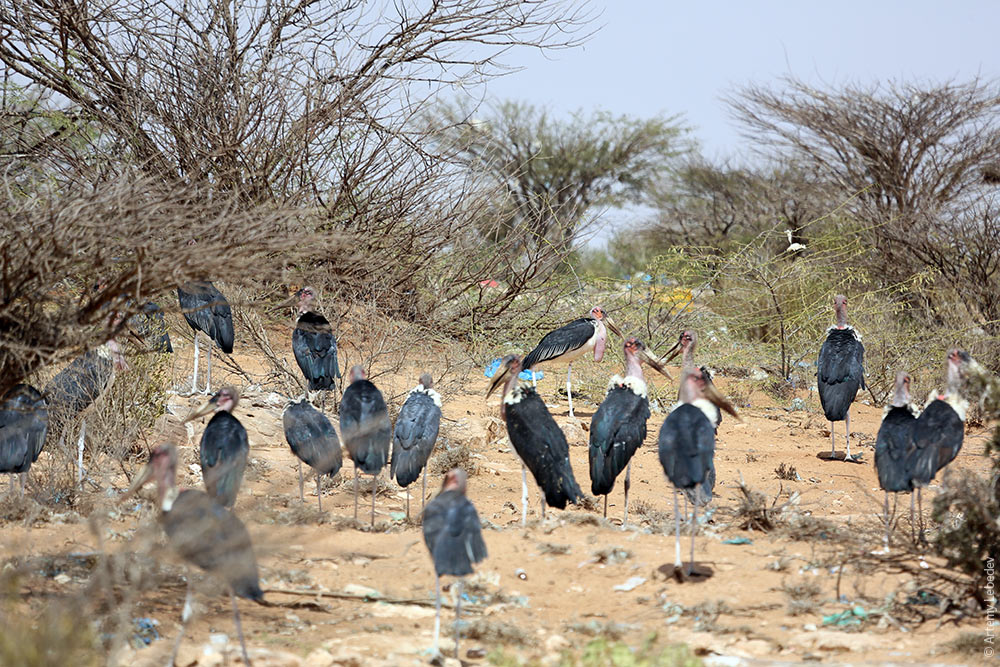 Marabous become airborne with great difficulty, laboriously flapping their heavy wings. The experience is like having a small Boeing fly past you. 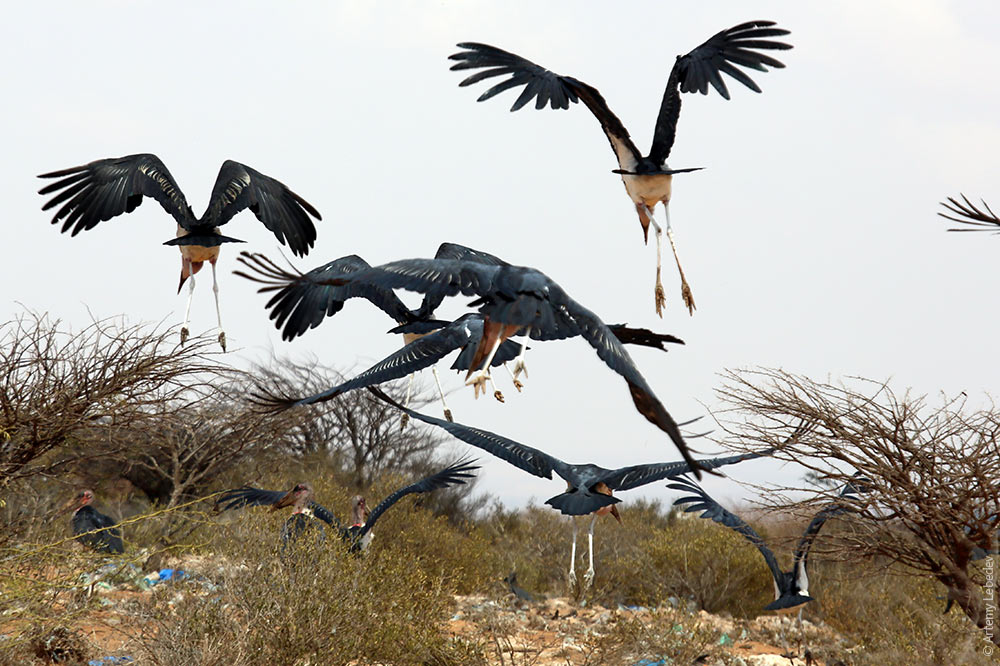 Here, surrounded by fetid refuse, the marabou feels like a guest of honor at a banquet. 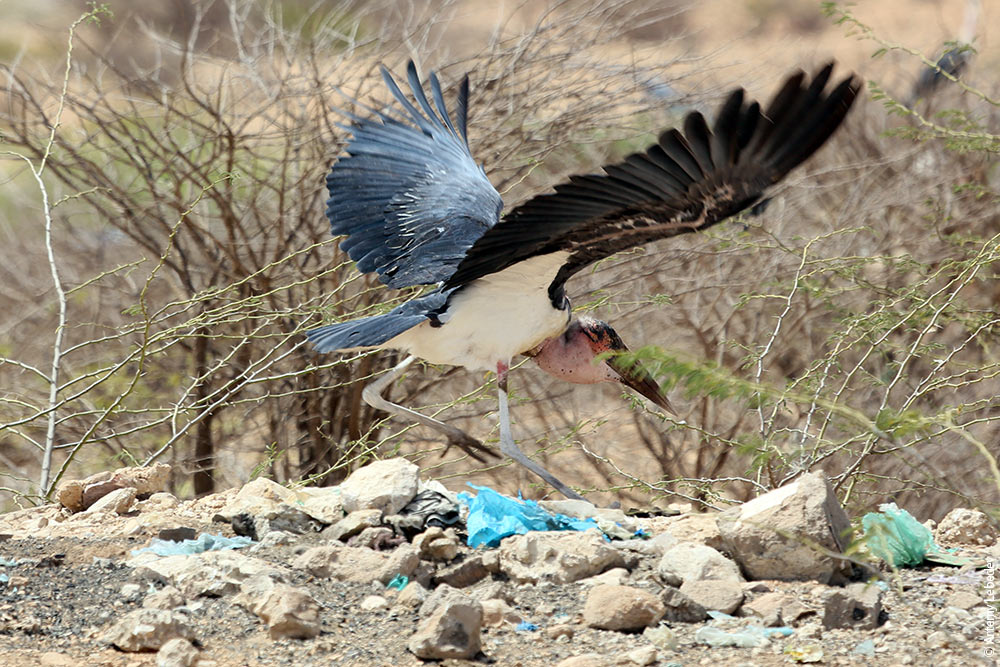 And there are the vultures. They’ve gotten into a squabble over the intestinal membrane of a goat that died several days ago. 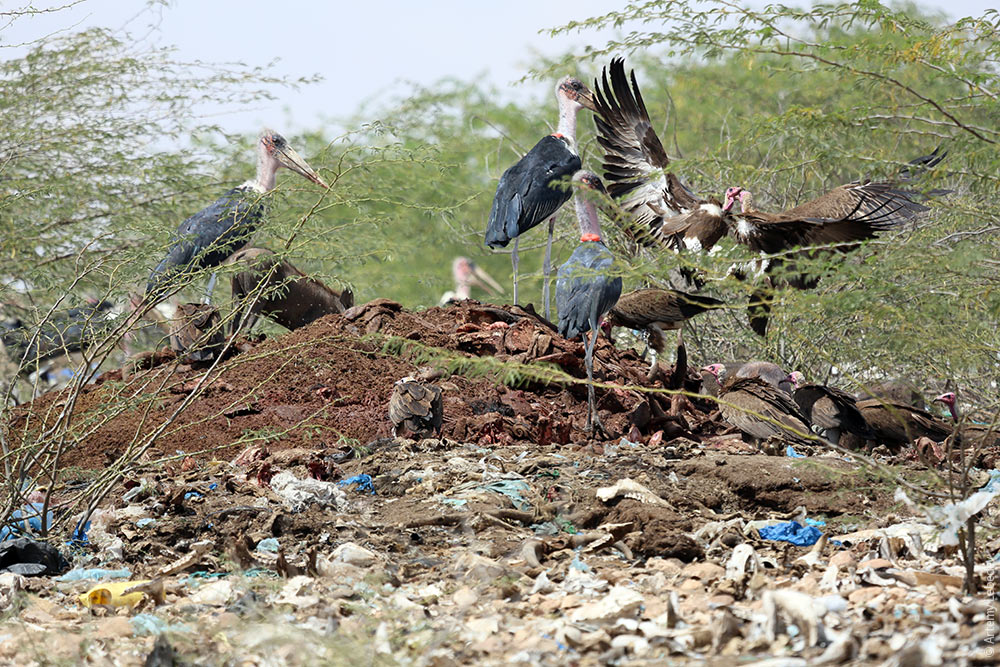 At last, the warthog appears. 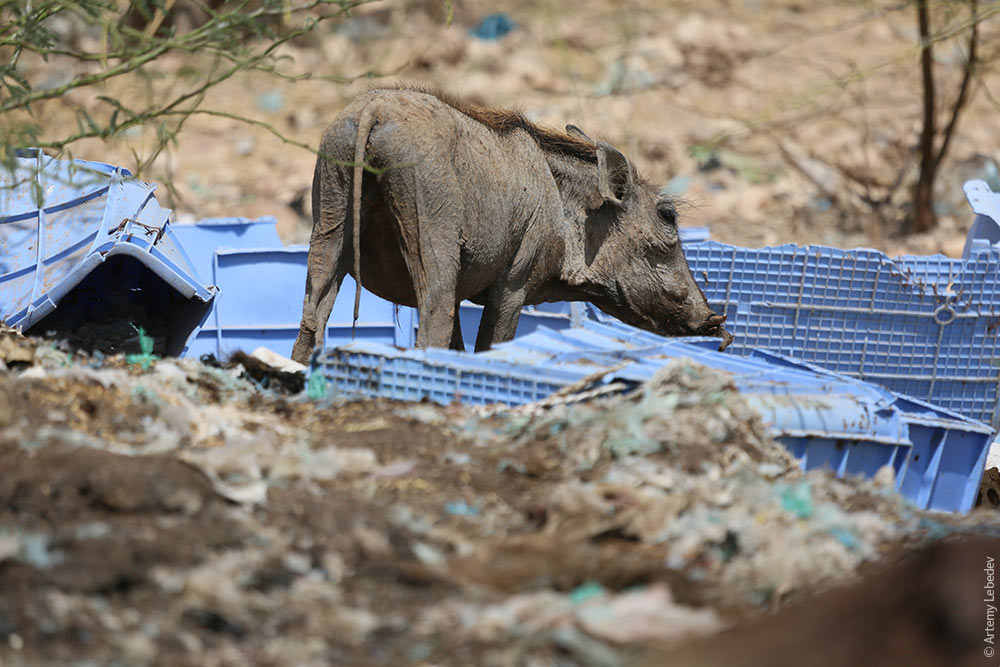 He feels quite at ease among the cow and camel jawbones.  Our jeep drives up onto one of the small hills where the marabous rest after feasting. 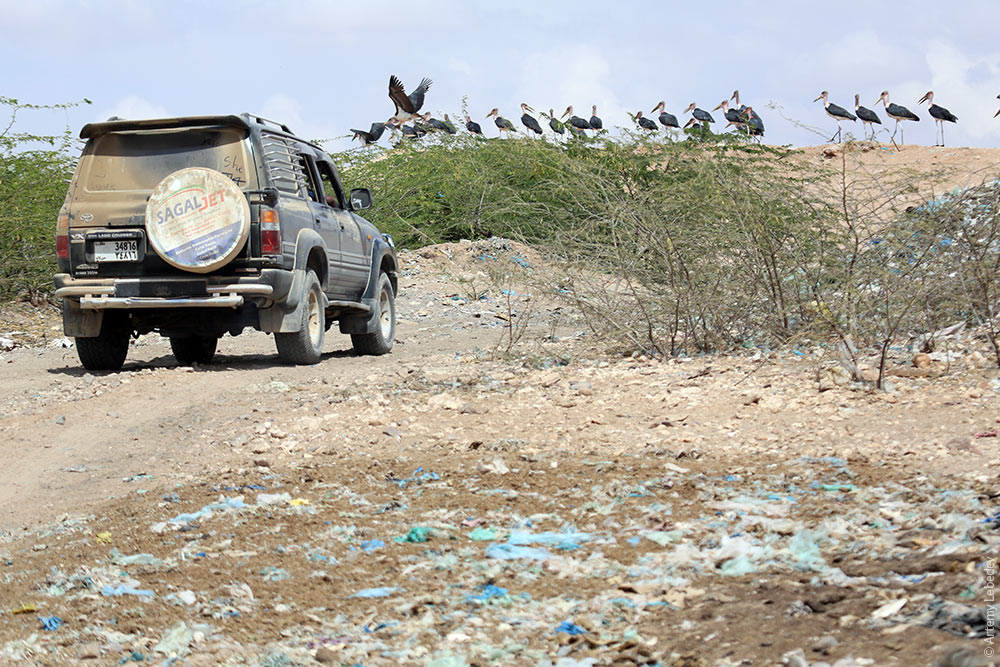 In case you ever wondered, these birds are what marabou feather boas are made of. 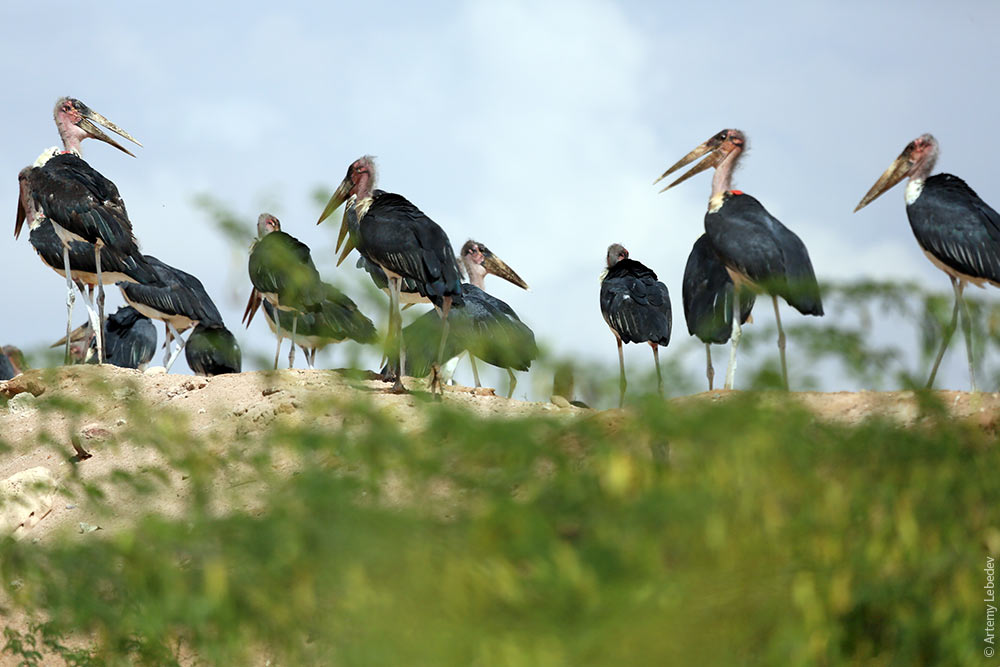 There’s also a lake nearby. It’s polluted with some kind of chemical waste, but that doesn’t deter the local fauna from basking on its shores. 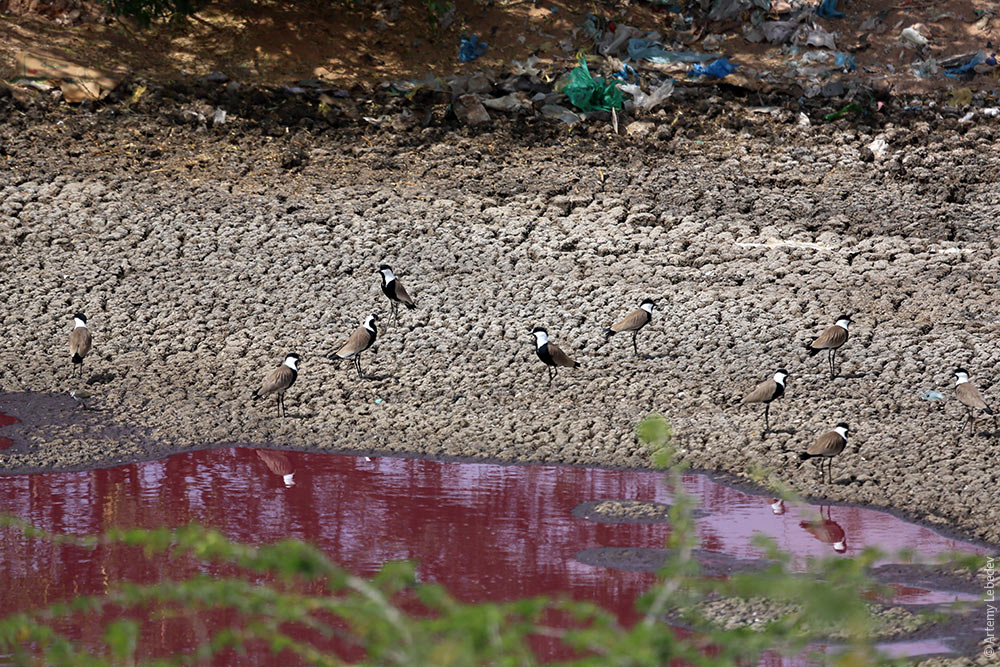 Next to the lake is a pharmacy bottle dump. 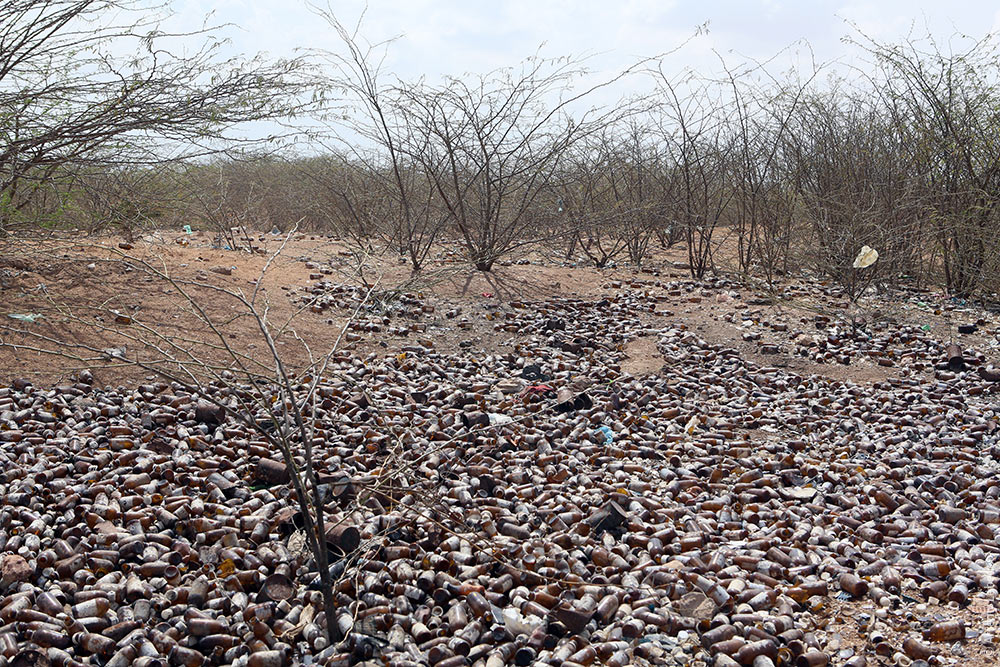 From here, an excellent view of the savannah with its rare trees opens up. A family of warthogs strolls along leisurely.  Chirp chirp! 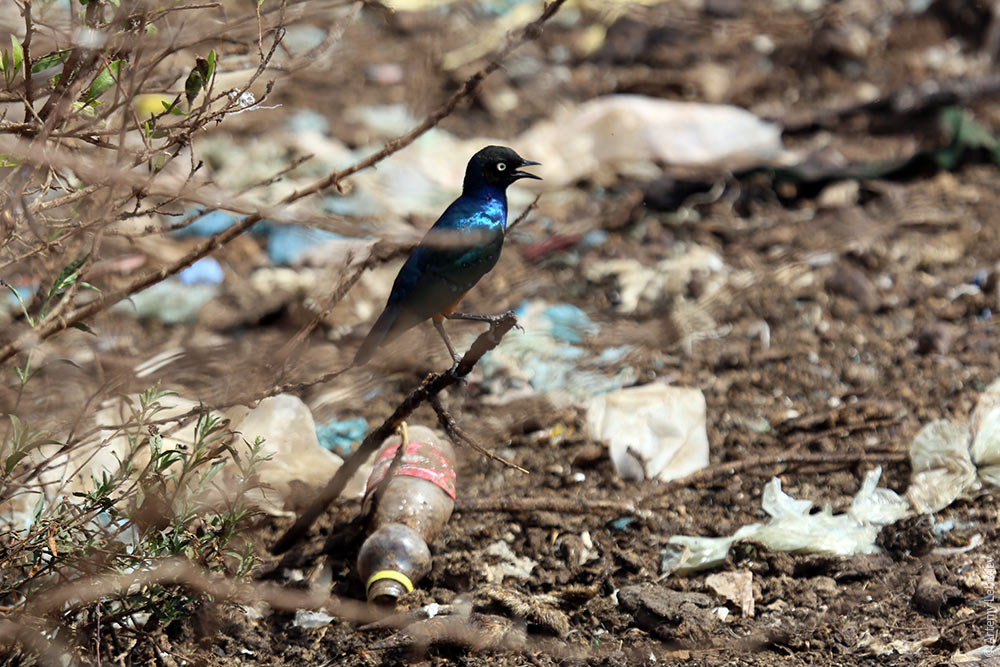 Oink oink, caw caw! 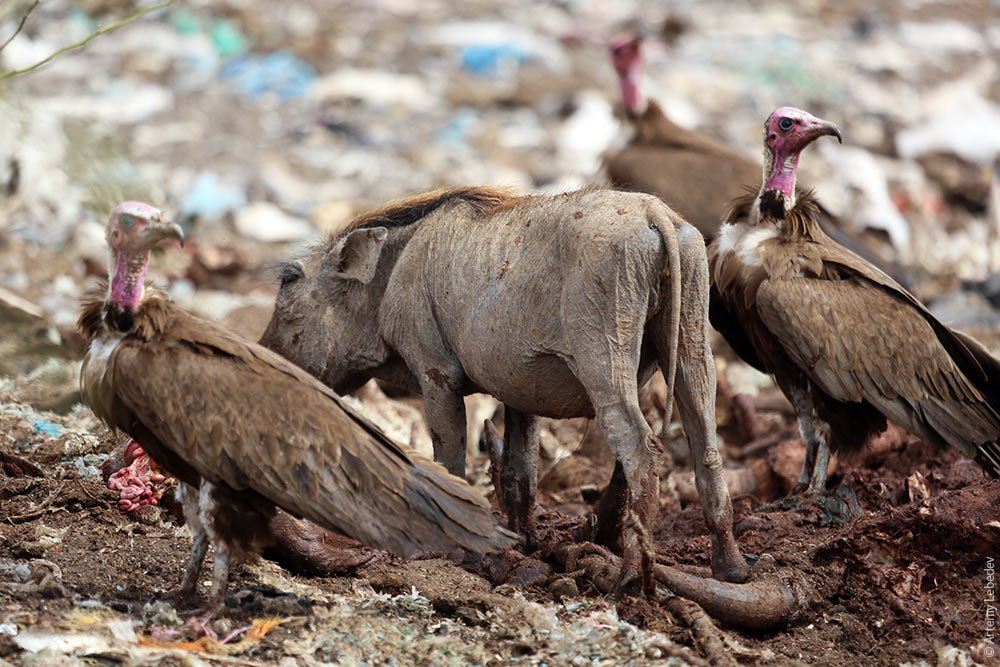 Business lunch. 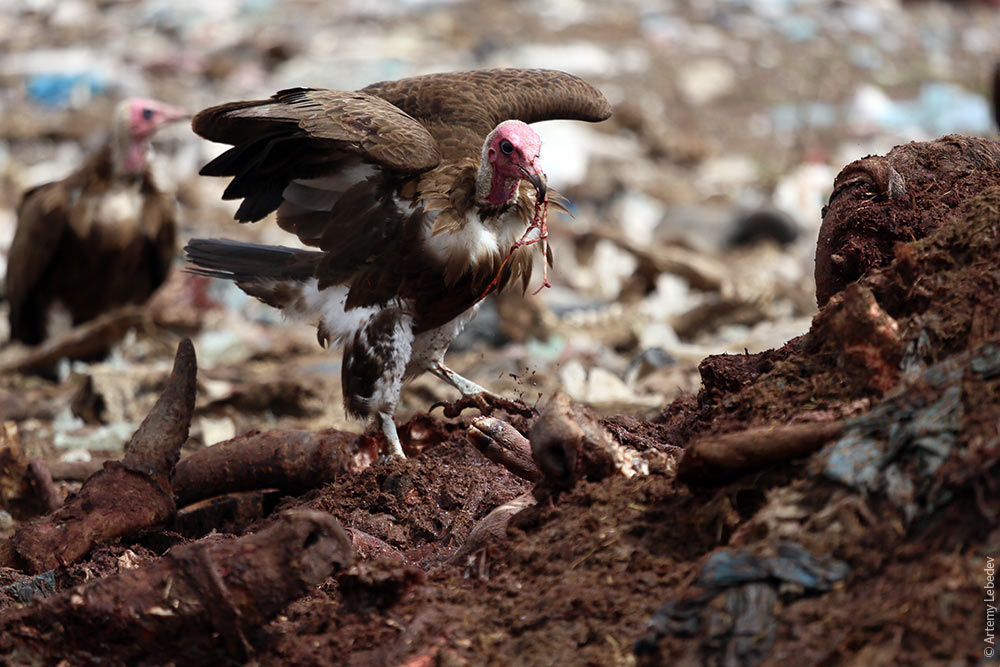 One careless movement—and the flock of birds abandons the half-decayed entrails and tails and takes off. 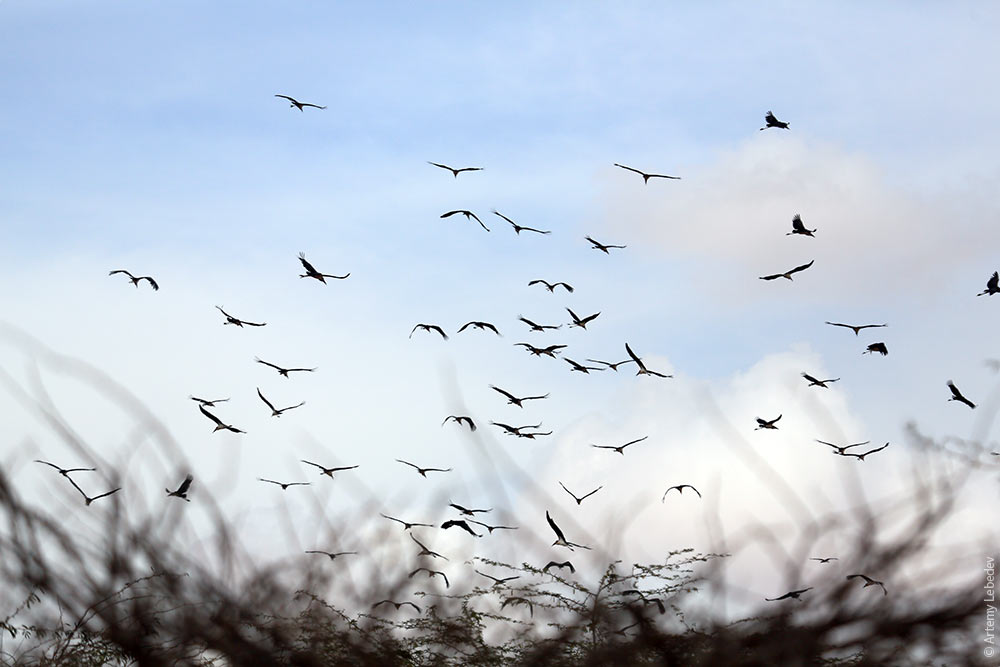 Those who can’t fly observe warily. This yumminess is simply too good to abandon so easily. 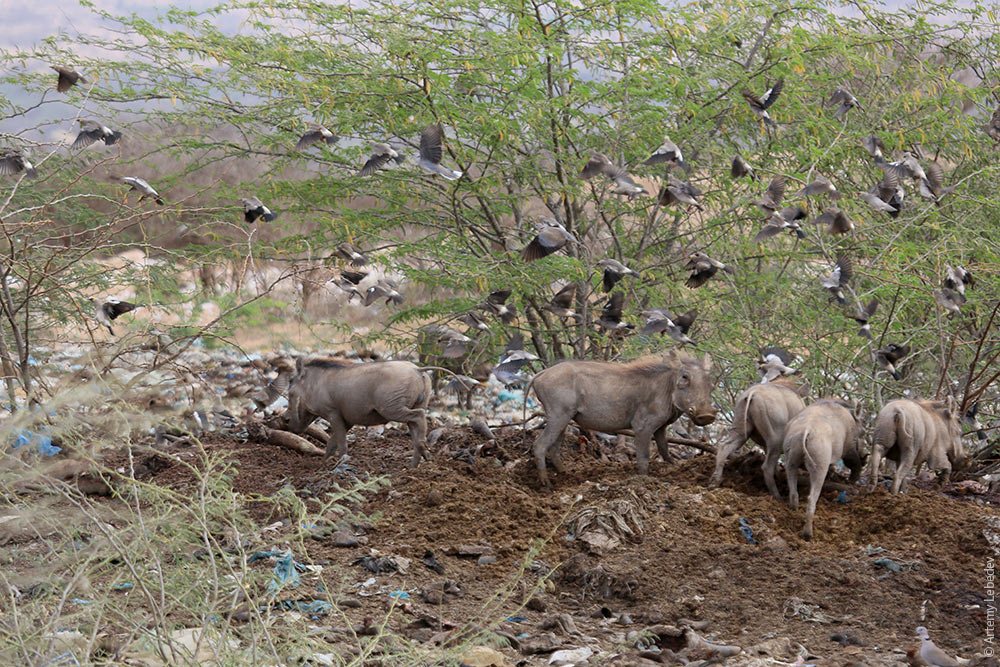 Patient waiting rewards the safari participant with unforgettable encounters with the most elusive inhabitants of these parts—the hyena and the jackal. 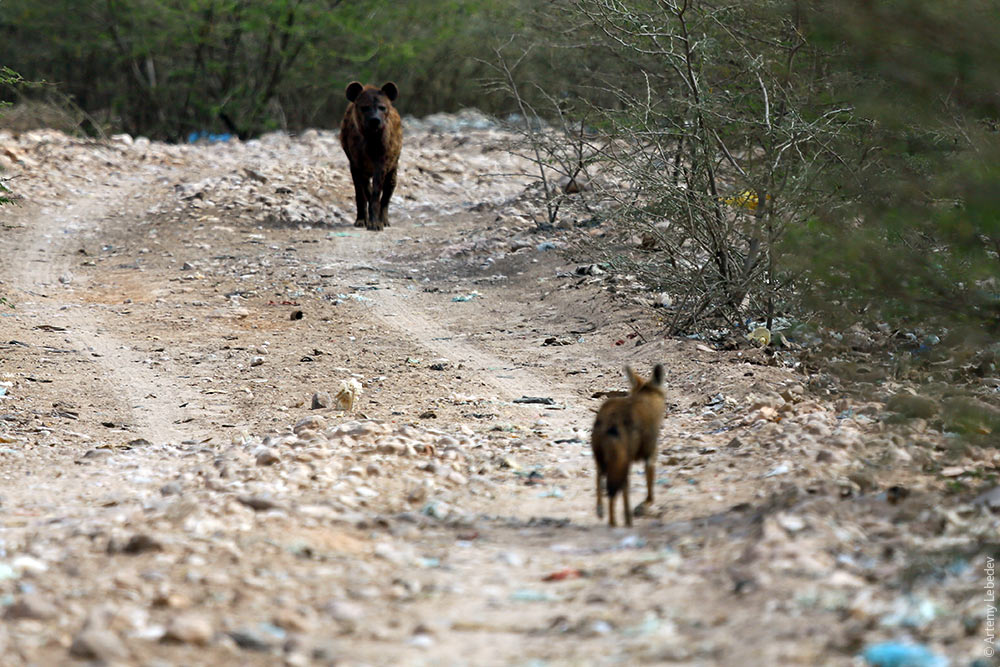 A family of baboons emerges. 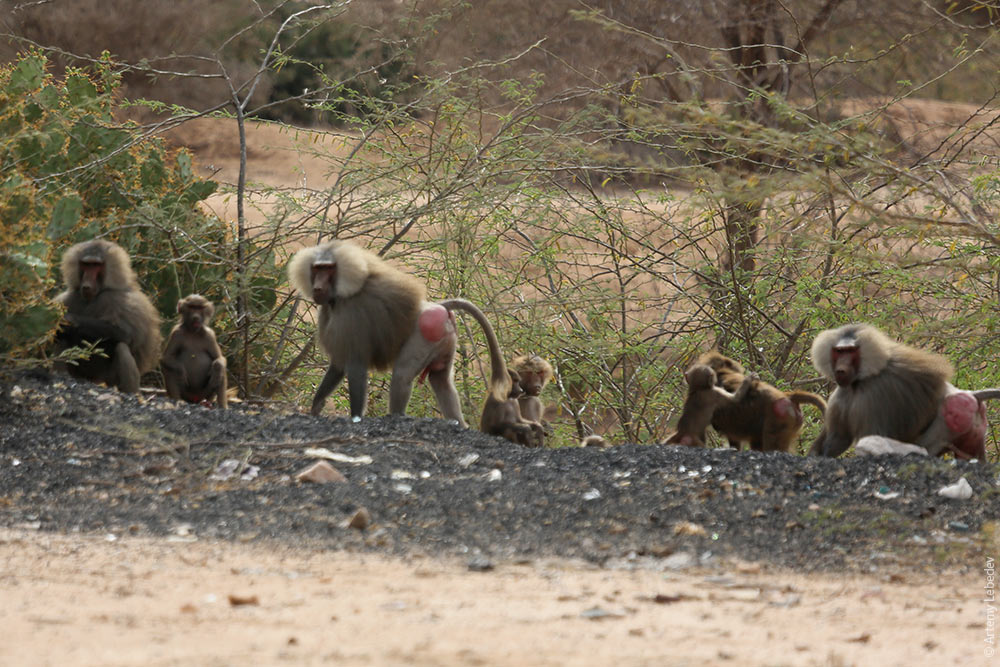 And, finally, the crown of creation—man. 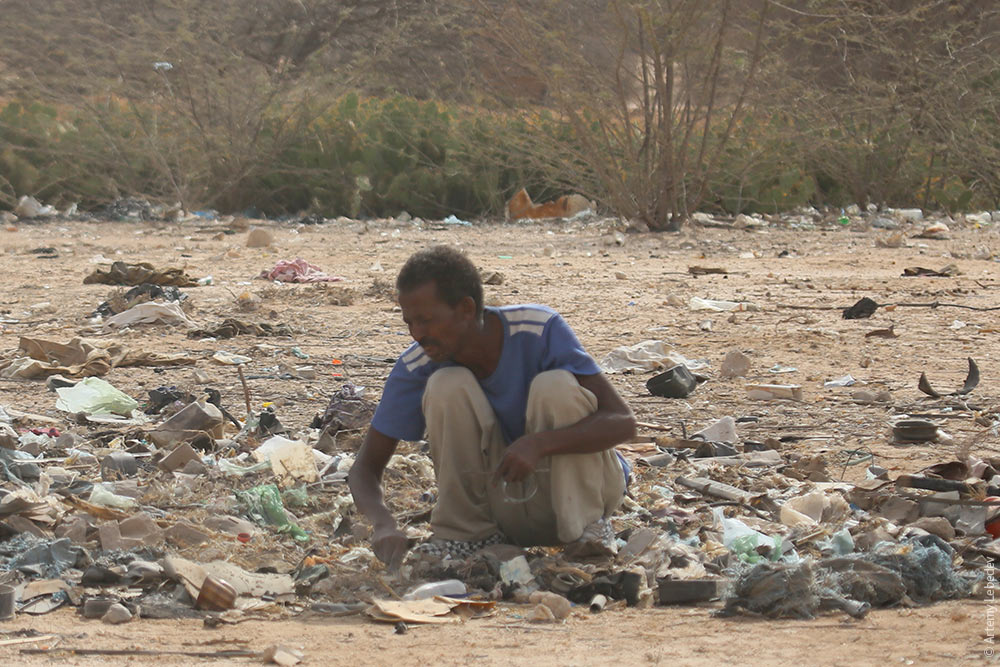 Many people mistakenly believe that plastic bags take an eternity to decompose. This concern is completely unfounded: it takes only a year or two for plastic bags to rot to pieces, after which they soon disappear entirely. 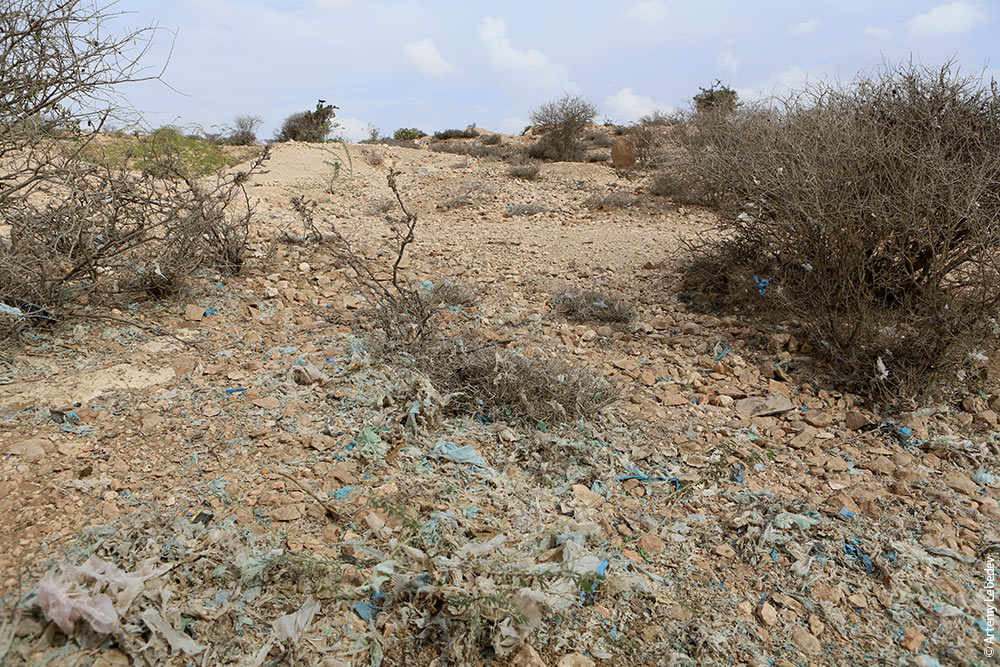 Each safari is unlike any other. Luck, powers of observation, the time of day—all of these factors play an important part. Come experience the wonders of an African safari! |